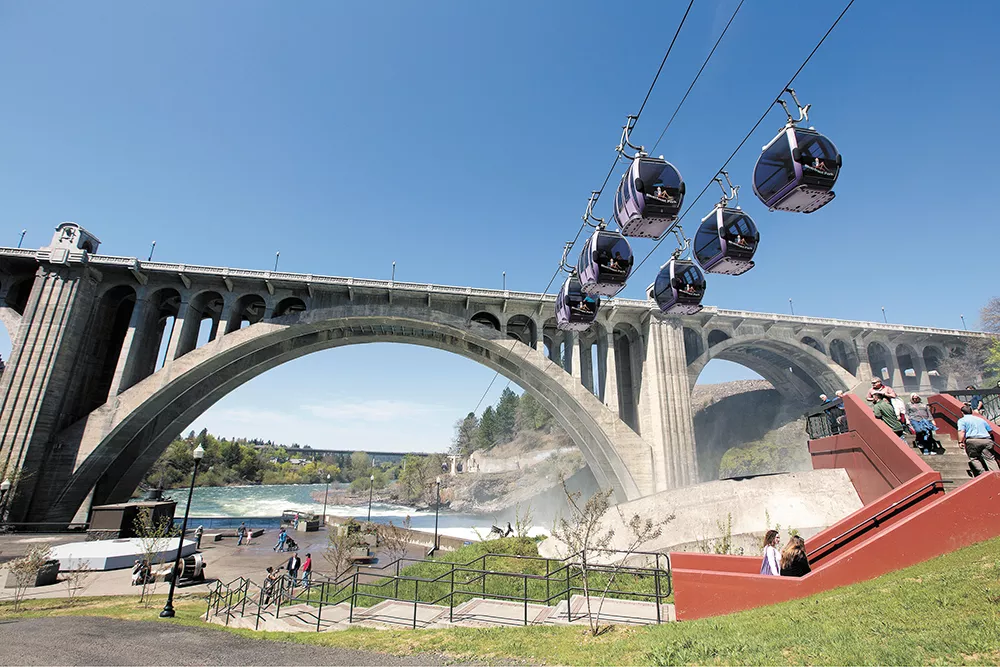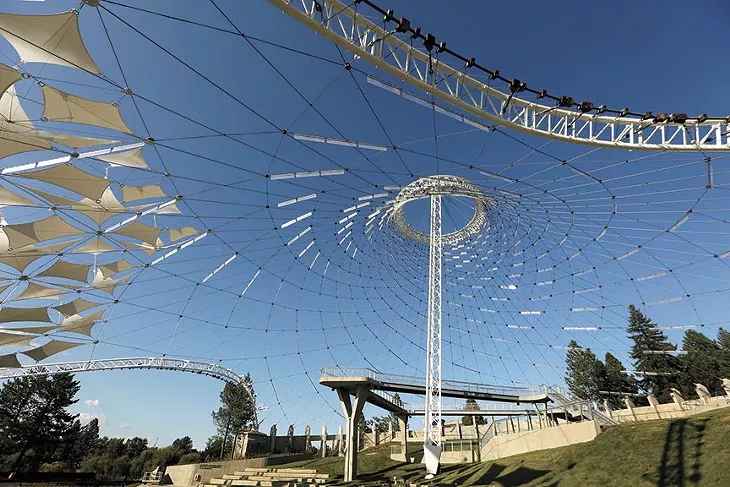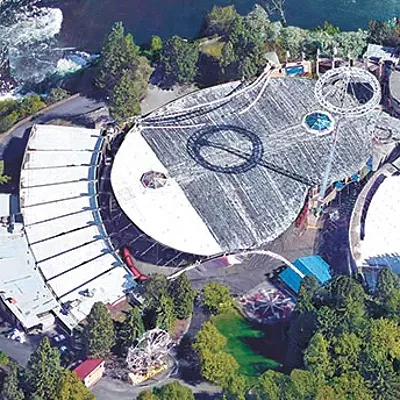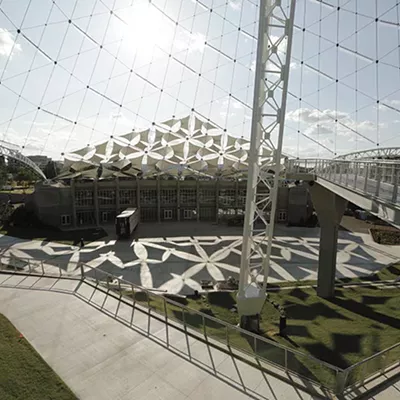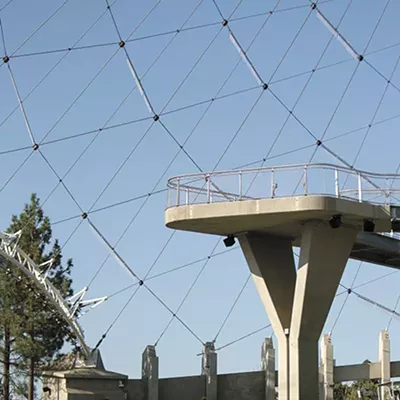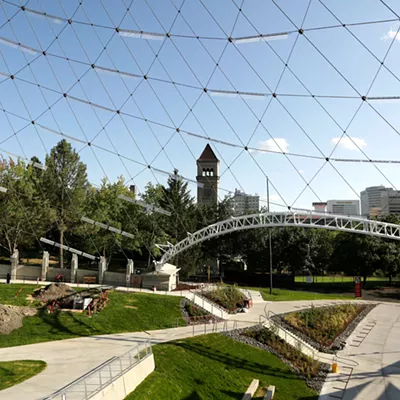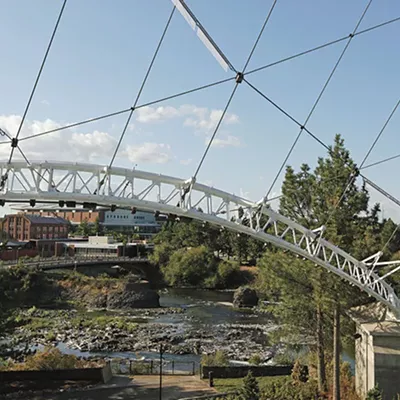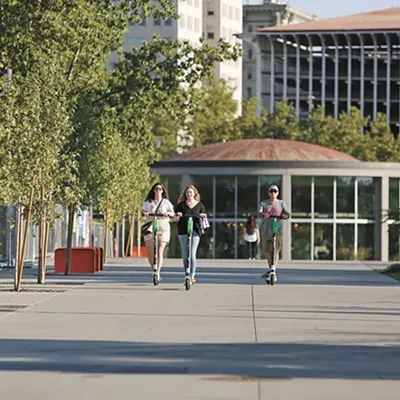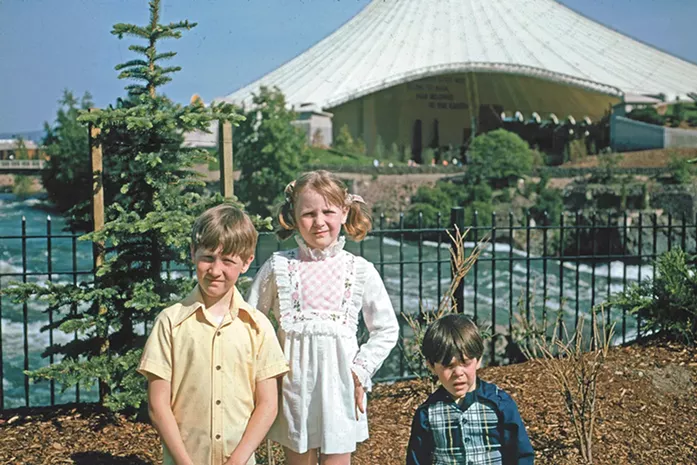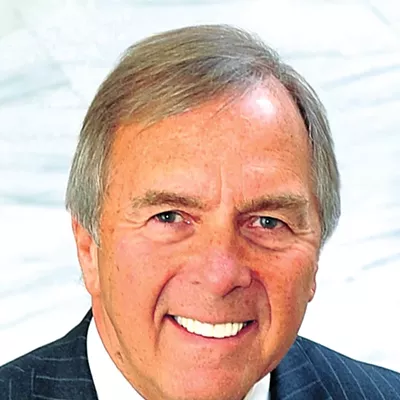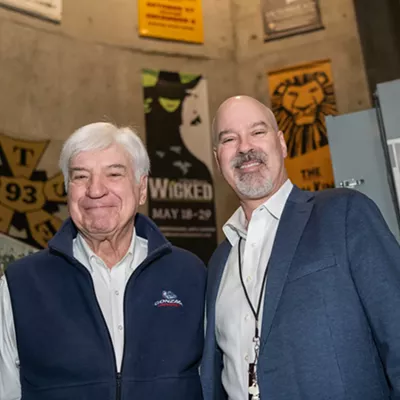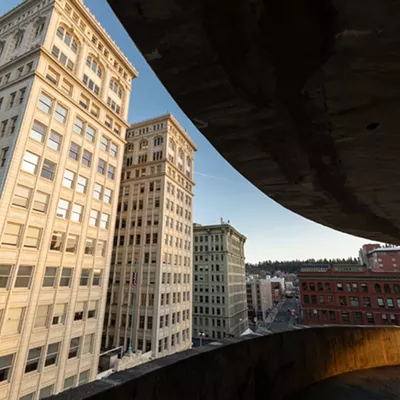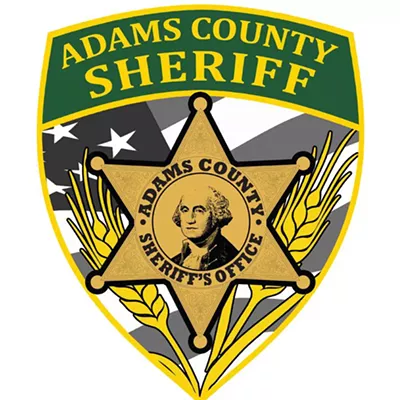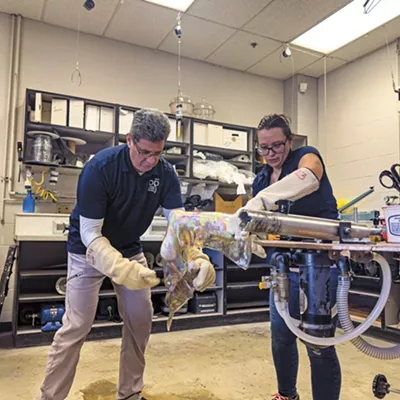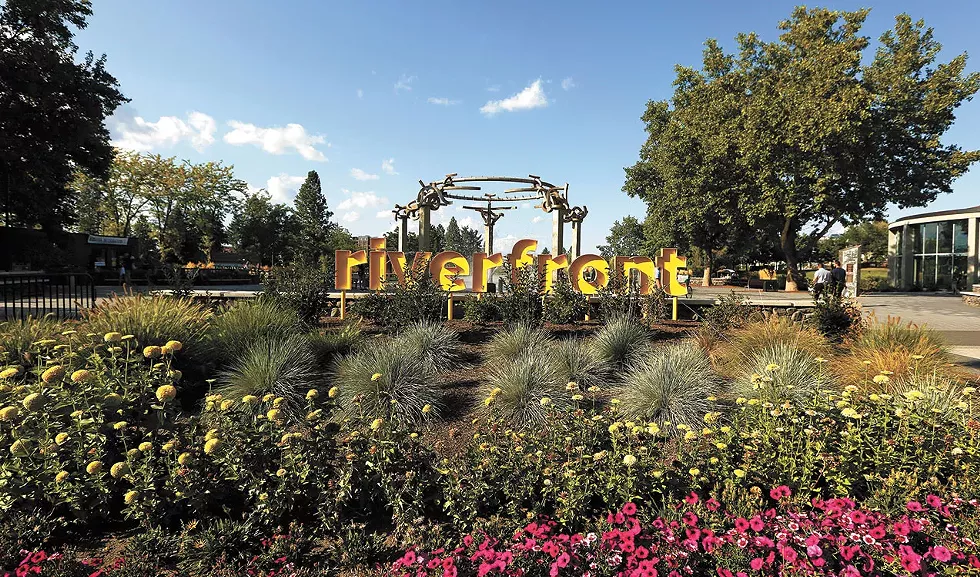
About 11 years ago exactly, another Pig Out in the Park had me thinking about Riverfront Park. Ever since Bill Youngs published The Fair and the Falls in 1996, I had this nagging feeling that Spokane wasn't quite doing right by the legacy of Expo '74.
So of course I wrote a column about it, riffing on the PBS show where Norm and Tommy save old American homes from ruin. "This Old Park" appeared in the Inlander on Aug. 28, 2008.
"With a bursting belly, you'll need to walk off the calories," I advised all those about to Pig Out, "so this year, take a tour of the park, the hidden corners and forgotten nooks. It's a spectacular place, and Spokane is lucky to have it. But too often, Riverfront Park is taken for granted.
"Fixing up this old park could be the most important thing we could do to keep Spokane on the upswing," I concluded, "yet we simply don't."
Fast-forward to February of 2013. Mayor David Condon dropped by Inlander HQ to tell me he was ready to mobilize the City of Spokane to fix up our old park. He asked me to chair the Citizens Advisory Committee that would create a plan Spokane could vote on and that the city and its parks department could put into action.
Finally it was time to stop complaining and start doing something about Riverfront Park.
A YEAR OF PLANNING
The land around the Spokane River Falls is the soul of our city — in fact, it's the soul of this place going back to well before American settlers ever came here. Riverfront Park, since the time it was the Expo '74 fairgrounds, has also become our living room — the place where we hang out with each other, have fun and live as brothers and sisters of Spokane. Everybody has a stake in what it should be, and the advisory committee needed to reflect a wide swath of public opinion.
With input from Spokane Parks, the Office of the Mayor and the City Council, we recruited 22 men and women representing different sectors of the city to come up with a batch of improvements to push Riverfront Park into the 21st century. Starting in May 2013, we met for nearly a year, and we presented our final report to the Spokane Park Board in April of 2014.
Our stated goal? "To create an innovative, refreshing, transformed park that can take its place among the best in the world." We also agreed on nine values that drove the details of our plan: Help Riverfront Park function as a gathering place; make it a place to showcase the excellence of our community; make it an economic generator; improve accessibility; optimize safety; create a balance of uses; preserve and promote affordability; protect and highlight natural resources; and, finally, add more "Wow!"
The Park Board endorsed our report, along with our recommendations on where to spend the money. The $64 million bond request was put before voters in November of 2014, and it passed with nearly two-thirds of the vote.
Spokane was officially not taking Riverfront Park for granted any more.
KEY PROJECTS
Going from plan to reality, as anyone who has done a home improvement project can tell you, is no straight line. To help defend the vision the team developed and the citizens endorsed, I joined the Park Board in May of 2015.
A big early decision was to break the projects into pieces, rather than hiring one builder and one architect to do all the work across the park. This made it more complex, but it also allowed us to bring in the right people for the various jobs. For example, we would never have thought of an ice skating ribbon if the firm we selected, Stantec, hadn't recommended it. We just wanted to move skating to the southwest corner of the park; instead we have something unique on the entire West Coast.
Another big project was a new home for the Looff Carrousel, which since 1978 had lived in a tiny old waffle house left over from the World's Fair. With its illuminated interior dome and enough space to showcase the hand-carved 1909 Charles Looff Carrousel, it's finally a proper home for so precious a treasure.
The grounds throughout the park received an overhaul, including the new Howard Street Promenade that connects north and south, from the Expo Butterfly to the Rotary Fountain, along a clear, well-lit path. And now there are power outlets peppered across the park to serve the events we enjoy throughout the year.
PUZZLING CENTERPIECE
And of course there's the Pavilion, fully renovated and opening to the public this week. Figuring out what to do with that immense structure has been a riddle ever since the World's Fair closed. The general consensus among planners was to make it a place that could be flexible enough to enjoy as an event space filled with people, or to spend a quiet afternoon with your family near the Spokane River. Inspired by the Bay Bridge lights in San Francisco, the committee hoped illuminating the cable-net structure would provide that "wow" factor we all wanted.
The first thing you'll notice about the new Pavilion is how huge it is in there — 60,000 square feet, with an event floor and a natural, mostly grass amphitheater. With no IMAX, no looming roof from the old skating rink, it's become a wide-open space in the middle of the city, all under the mesmerizing geometry of that cable-net structure. Engineers advised against hanging a heavy fabric roof on the structure, but shade was added via distinctive panels that will protect the floor during the hottest parts of the summer. The entire facility is a fully functioning event space as well, with seating for 4,000 and all the power your favorite band will need to plug into.
Again, the design team carried us to the finish line, as NAC Architecture and Garco Construction brought the "wow" by envisioning an elevated walkway within the pavilion to create new views of the river and beyond. Along with Spokane's Power City Electric and GVA Lighting of Ontario, they also conjured a spectacular LED "light-blade" system that is the first of its kind anywhere. Made up of 479 individual blades that can each be controlled separately, the system creates one-of-a-kind light shows — or just glows softly like a civic lantern to connect us all.
Still to come as the bond project wraps up next year will be the North Bank projects — an Ice Age Floods-inspired playground, a wheels park for skateboarders and scooters, new Hoopfest courts and parking, all set to open a year from now.
Finally there will be improvements to the West Havermale area, including a playground funded not by the bond, but by Providence Health Care and designed to be inclusive of all kids — especially kids with challenges for whom the usual playgrounds often don't work. The inclusive playground, to be designed with the help of the nonprofit Shane's Inspiration, experts in the field, is set to open in the spring of 2021.
NO MORE COASTING
Amid all the excitement, let's not forget that we did neglect Riverfront Park for decades. Spokane's vitality and devotion pulled Riverfront Park back from the brink of ruin over these past six years, and we should celebrate that moment under the Pavilion together. But what if our moment of truth for saving the park had come when Spokane could not afford to act?
That happens a lot, as cities struggle to maintain their public spaces — even Central Park in New York City had to be rescued. While we were holding a World's Fair, New York City was nearly broke and had effectively abandoned Central Park. Citizens rallied to answer that challenge, ultimately taking over management of one of the greatest parks in the world.
As a volunteer on the Park Board, I have seen up close that Spokane Parks does a great job. But it has its limits, operating on a fixed budget with 86 other parks to manage. Over the long haul, will Spokane Parks all by itself be enough? The stakes are too high to coast through another 30 or 40 years.
While our $64 million expenditure is a huge public investment, and a pivotal vote of confidence on where we are as a city today, don't think of it as extravagant.
Consider that in 2014, the same year Spokane passed its bond, Tacoma passed its own park bond — at $198 million. In Tulsa that same year, the George Kaiser Foundation gave $200 million to the Gathering Place; that gift was more than matched by other donors, and the $465 million Oklahoma park opened last year.
Finally consider Millennium Park in Chicago, which opened in 2004 at a cost of $490 million. Boondoggle? Quite the opposite, as a 2011 Texas A&M study found it triggered $2.45 billion in construction nearby, grew the neighborhood population by 66 percent, cut crime by 27 percent and created $11.1 billion in new annual tourism spending. Millennium Park is now, according to the City of Chicago, the No. 1 tourist attraction in the entire Midwest with 25 million annual visitors.
Numbers like that prove we can't afford to neglect our Spokane version of Central Park.
When I walked the park in the summer of 2008 and wondered why somebody wasn't doing something, I was thinking about it all wrong. "Who's going to fix this?" misses the point. The challenge coming next is to find creative, broad-based ways to make Riverfront Spokane — our park's distinctive new name — even better. So for citizens, local institutions and certainly every member of the next generation, the correct question is, "What can I do?" ♦
WORLD'S FAIR LEFTOVERS
Between 1962-84, the United States hosted six World's Fairs, including Spokane's in 1974. Each one left behind buildings that future generations had to weave into the fabric of their cities. In 1962, Seattle was the first American city since New York in 1939 to host a World's Fair. And they set the pace, architecture-wise, with the Space Needle, which has become one of America's most recognizable structures. Surrounded by the Seattle Center grounds, in 2018 the Space Needle reopened after a $100 million renovation.
In 1964, the New York World's Fair left behind the New York Pavilion (similar to Spokane's United States Pavilion for its cable-net structure) and the Unisphere, which have since been folded into the grounds of the Queens Museum at Flushing Meadows Park. While the structures have remained puzzles as far as best uses, the Unisphere especially has thrived as a backdrop for movies like Men in Black, Iron Man 2 and Tomorrowland.
The Tower of the Americas was built for the 1968 Hemisfair in San Antonio and continues to be used as a restaurant, observation deck and really big FM radio antennae.
In Spokane, the United States Pavilion, with no street access, has always been a tricky prospect, having housed a restaurant, a Disney-like interactive experience called "The Spokane Story," ice skating, amusement rides and even an IMAX theater, all to uneven results.
Designed by Bill Bain Jr. of the renowned Seattle architecture firm NBBJ and evocative of a Native American dwelling, our Pavilion remains among the largest cable net structures in the world. (Bain just passed away in June.) Reopening this week after a $22.6 million renovation, the Pavilion has been reimagined as an events space, with one-of-a-kind LED lighting to create a lantern effect, along with a new raised platform to offer expansive views.
In 1974, the federal government was a partner and paid for Spokane's Pavilion; subsequent World's Fairs struggled to gain similar federal support.
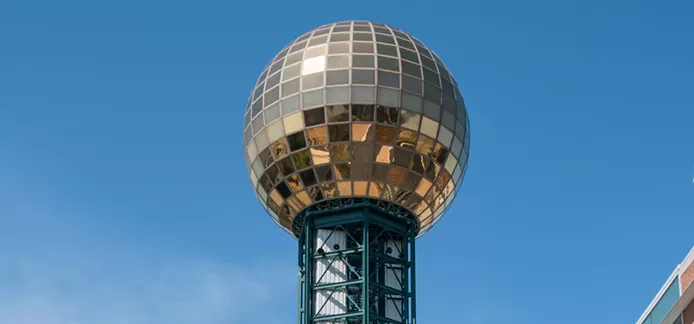
While the 1982 Knoxville World's Fair had strong attendance, the City of Knoxville was left with a $46 million tab after its run. The Tennessee city still enjoys the Sunsphere as a local icon and observation tower.
In 1984, New Orleans hosted what would be the last World's Fair on American soil. With EPCOT opening in Florida and the Olympics in Los Angeles that same year, it declared bankruptcy mid-run, leaving behind the Morial Convention Center but no signature architectural legacy.
JOIN THE CELEBRATION
The Riverfront Spokane Pavilion reopens to the public this weekend. Friday features the official ribbon cutting (5 pm), with a blessing by the Spokane Tribe. There will be food vendors, a kids zone and a beer garden (4 to 9 pm), with live music by the Cronkites (6:30 pm). Saturday's festivities run all day, starting at 9 am, with a fun run, performances and events all day long. Food vendors will be on hand starting at 1 pm, with the beer garden opening at 4. The Spokane Symphony performs at 4 pm, with their new music director James Lowe making his debut, followed by Seattle's the Dip, fresh off their Bumbershoot show, at 7. Both days conclude with a light show of the newly installed illumination blades on the Pavilion's cable-net roof. Check out the elevated experience, and bring a blanket and stake out a spot on the lawn to take it all in. For details, visit my.spokanecity.org/riverfrontspokane.
CAMPAIGN FOR RIVERFRONT SPOKANE
If you'd like to help fund the remaining, privately funded projects inside Riverfront Spokane, or just support programming and maintenance, check out the Spokane Parks Foundation's Campaign for Riverfront Spokane. Your gift can be memorialized around the park, from etched pavers to even adopting a Looff Carrousel animal. To learn more, visit spkoaneparksfoundation.org/riverfront-spokane-campaign.
ABOUT THE AUTHOR
When Inlander Publisher Ted S. McGregor Jr. was 9, his parents took him to opening day of Expo '74 on May 4, 1974. He asked if they brought in the river just for the World's Fair. Starting in 2013, he served as chairman of the citizens advisory committee that created the Riverfront Park redevelopment plan funded by voters in 2014. Today he is a volunteer member of the Spokane Park Board.

